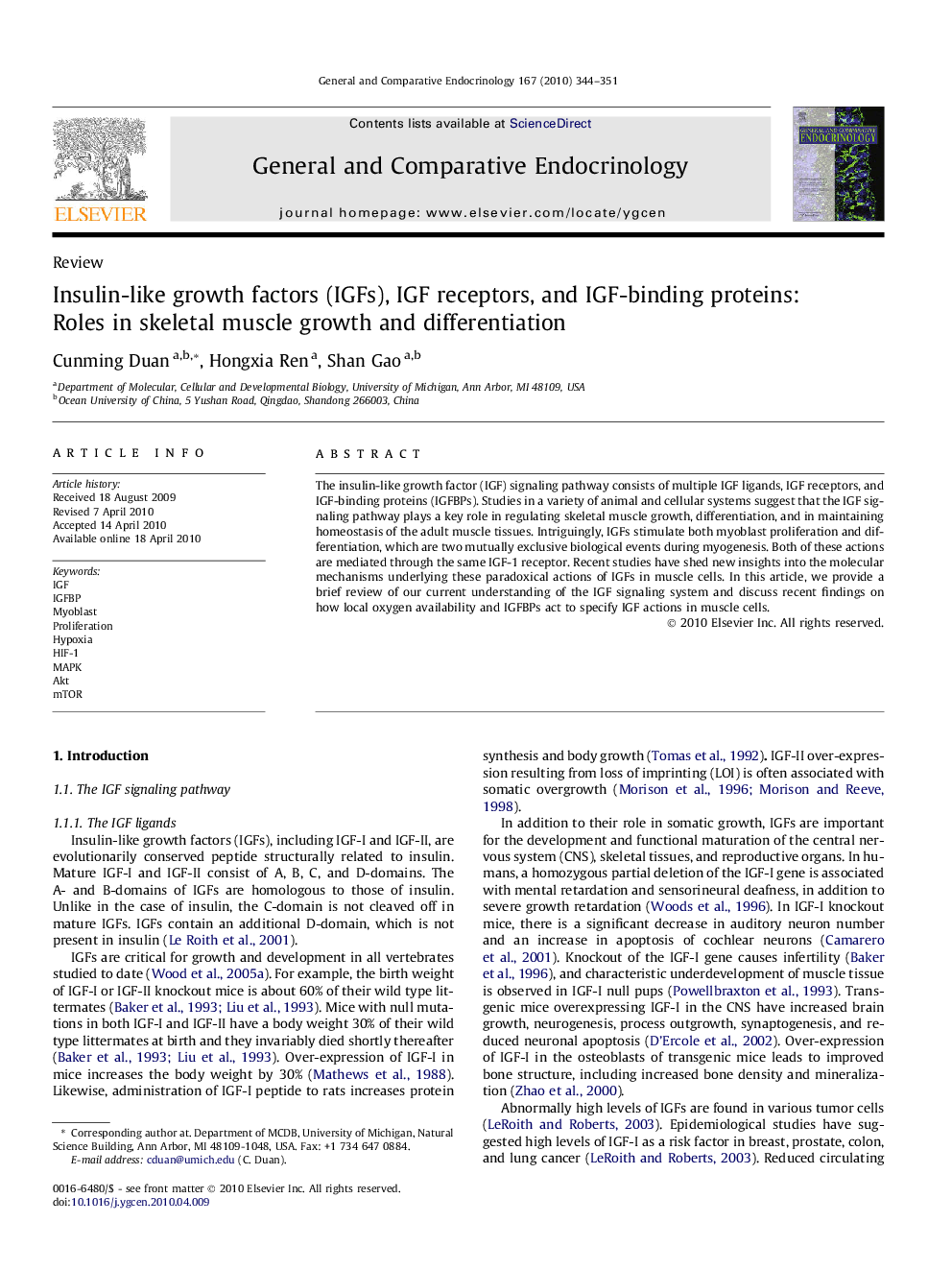| Article ID | Journal | Published Year | Pages | File Type |
|---|---|---|---|---|
| 2801264 | General and Comparative Endocrinology | 2010 | 8 Pages |
The insulin-like growth factor (IGF) signaling pathway consists of multiple IGF ligands, IGF receptors, and IGF-binding proteins (IGFBPs). Studies in a variety of animal and cellular systems suggest that the IGF signaling pathway plays a key role in regulating skeletal muscle growth, differentiation, and in maintaining homeostasis of the adult muscle tissues. Intriguingly, IGFs stimulate both myoblast proliferation and differentiation, which are two mutually exclusive biological events during myogenesis. Both of these actions are mediated through the same IGF-1 receptor. Recent studies have shed new insights into the molecular mechanisms underlying these paradoxical actions of IGFs in muscle cells. In this article, we provide a brief review of our current understanding of the IGF signaling system and discuss recent findings on how local oxygen availability and IGFBPs act to specify IGF actions in muscle cells.
